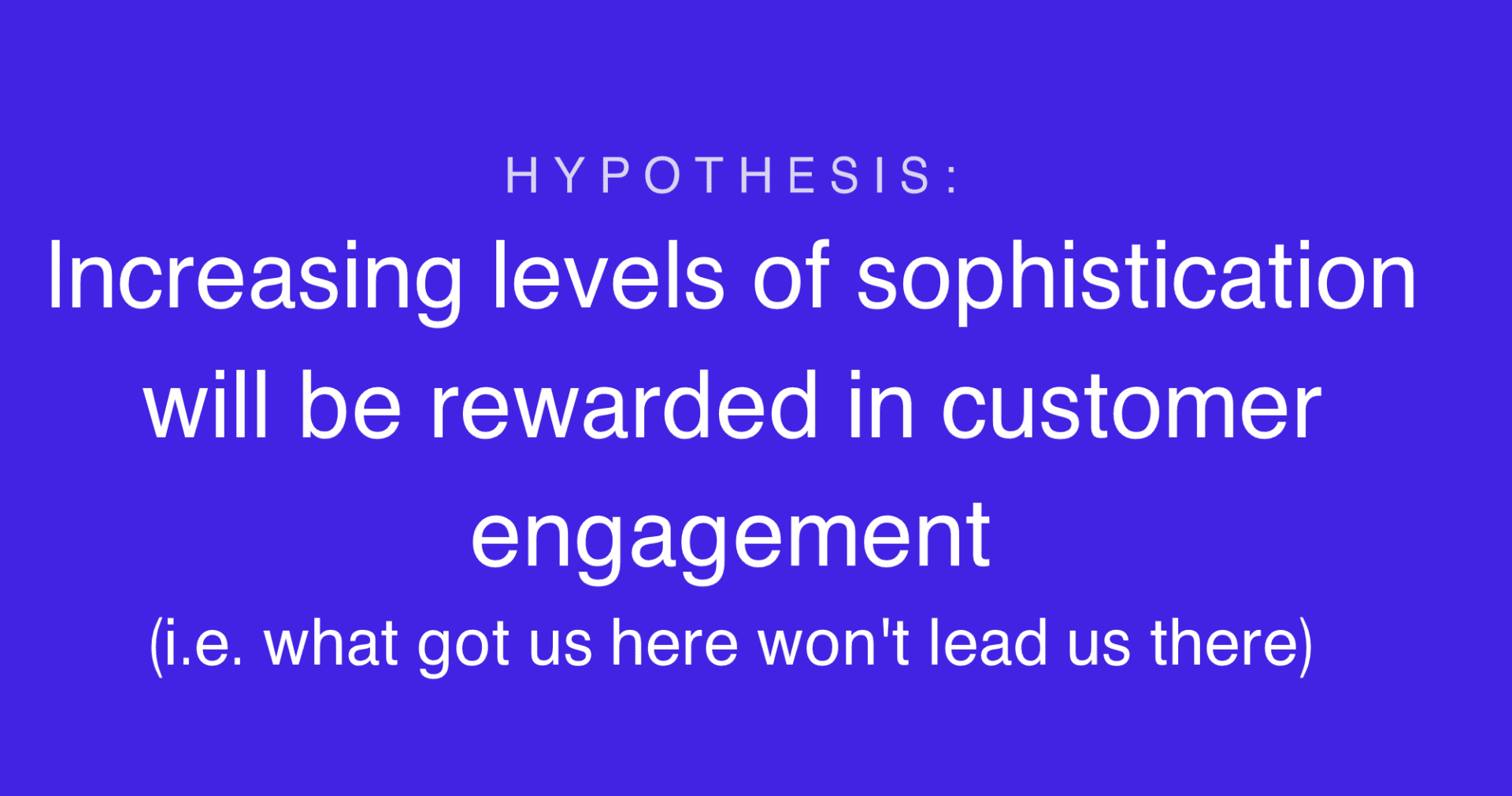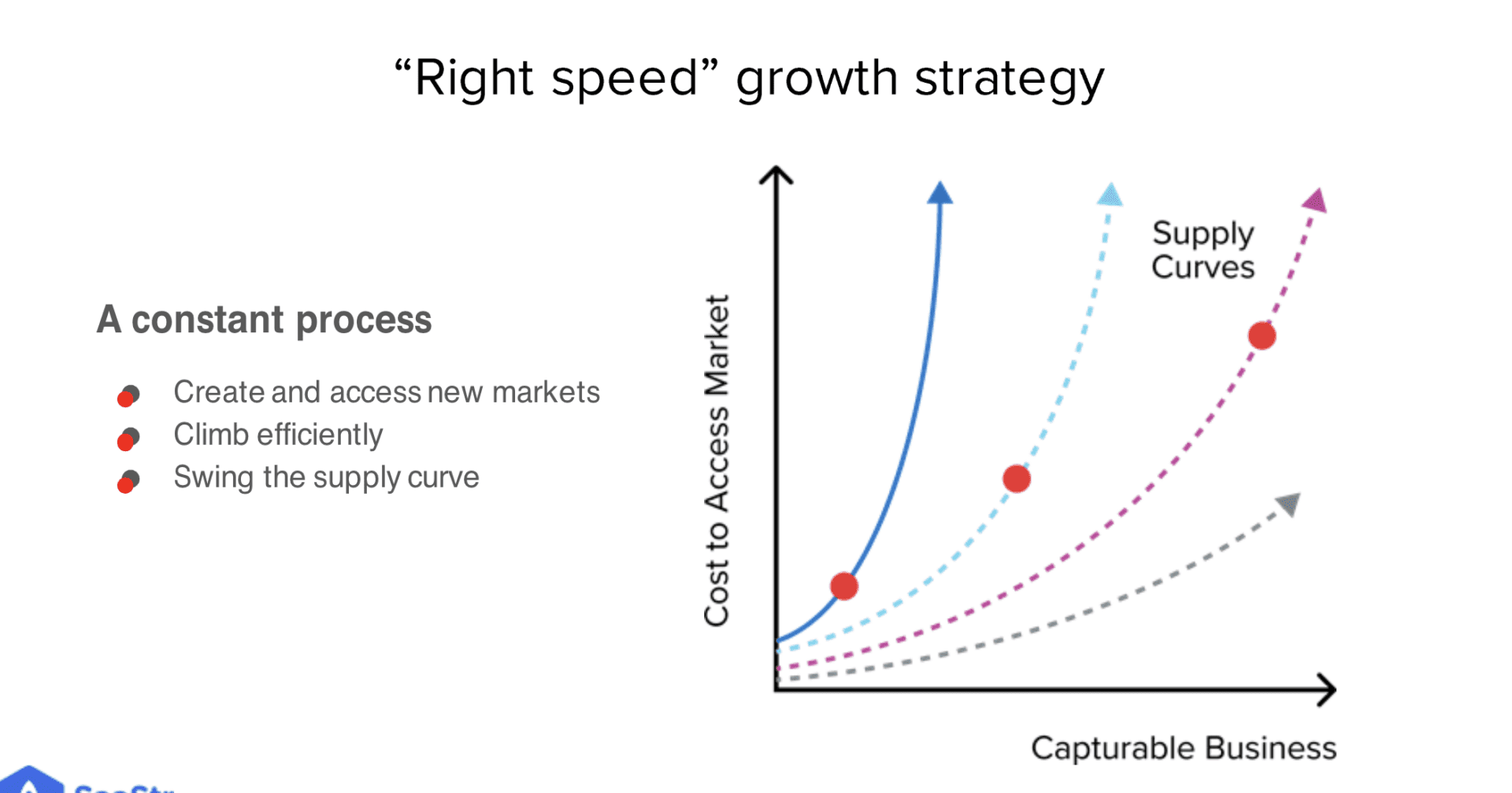When change is happening, even “negative” change, there’s always opportunity in it, says Bill Magnuson, Co-Founder and CEO of Braze. But how do you find that opportunity when there’s a lot of pressure from venture and the market?
Braze was founded in 2011 when the most exciting mobile apps were a compass, a flashlight, and a game where you could feed fish. They were building for a market that didn’t exist so they could sell to job titles that also didn’t exist.
If you’re building a generational company, you need to think long-term. You can’t chase shiny objects. You need to parse through the vanity metrics and figure out what will endure.
Magnuson shares his insights on how to find opportunities during headwinds and how Braze scaled to $400M+ ARR.
When The Pace Of Change Accelerates, It Creates Opportunity
When times are changing, the ones who will win are the ones who predict what the change is leading to, and they start building for that tomorrow right now. Those companies will have a headstart on the competition when the market arrives.
“When I look at the purpose of venture capital, it’s not to burn a dollar five in order to grow a dollar of revenue,” says Magnuson. “It’s to give you the opportunity to already be building for the market while it’s still developing.”
Blaze was founded in 2011. From 2011 to 2015, the only part of the mobile market that was making money was mobile gaming, but tricking children into buying fish food wasn’t a sustainable business.
Instead, looking forward and seeing that the speed of mobile adoption would lead to people moving their lives, products, and services into mobile was the conviction that led Braze to its future success.
They built a platform for future verticals while competitors were going after current, unsustainable ones.
The Takeaway —
Don’t chase after the same ball everyone else is. Look at what is changing in the market and figure out how it will create a more broad opportunity.

Stop Chasing The Shiny Things
When discussing acceleration, it’s important to look at how these cycles are changing faster than ever.
Two truths exist for acceleration:
- Things are changing very quickly.
- They interact with things that change more slowly.
Pay attention to both sides to create enduring change and to gain the most enduring advantage.
Things that move fast create new opportunities and toe-holds in the market, but you must pace yourself correctly to build a generational business.
The Takeaway —
As you think about scaling your company, you need to reserve your conviction and focus on changes that will endure. If you’re chasing around shiny things that pop up every six months, you’ll run out of energy and financing.

Build For Something That Will Be True in 5 or 10 Years
Determine what changes current trends and developments are going to drive in humans.
During the pandemic, the way people transacted and communicated changed rapidly. But, as things leveled out, the growth path for many companies changed back to what they were before the pandemic.
There’s a massive opportunity because of the size of some of these markets and how quickly they move, but at the end of the day, there are enduring facts about humans and how they behave.
If we lose sight of those facts, we lose the ability to build enduring businesses.
The Takeaway —
There is short-term opportunity when chasing shiny things, but if you want to create an enduring business, you need to dig a few layers deeper and figure out what behaviors will likely stick around in 5-10 years vs. what is needed right now. Sometimes, those things overlap, and sometimes, they don’t.

How To Figure Out What Changes Will Endure
Let’s look at how Braze approached this idea of figuring out which changes they thought would endure.
Braze didn’t find a true product-market fit until around 2014-2015. It took three or four years of quiet building and a strong conviction to see success.
The future they knew was coming wasn’t there yet, and it was nerve-wracking for some people on the team when they were running out of money (twice!) and banking on a change in how customers behave.
But the founders believed a mobile-first world was the future. And it was.
The other enduring changes Braze believed were coming included:
- Enterprise would be transformed by mobile.
- Customer engagement would change completely.
Both came true.
Because of changing consumer sentiment and because of the way people adopt mobile technology, increasing levels of sophistication would be rewarded in customer engagement.
To actually engage with people today, as opposed to 2011 when they started building for this possibility, you have to:
- Invest in first-party data to better understand your customers
- Integrate into the product experience instead of only coming in over the top as many email strategies did
- Coordinate across different channels
- Personalize the content to be relevant
- Analyze results as they come in
Most likely, the things that got you to where you are today won’t get you to where you’re aiming to get to tomorrow because you’re building for teams and markets that either don’t exist or aren’t ready for you yet.
The Takeaway —
When you’re trying to figure out which change will endure through a market, go back to a few key ideas:
- The humans you’re selling to
- How their job is evolving
- What skill sets they’re investing in
- What it takes to turn early champions into future business leaders of tomorrow
The teams, the budgets, the skill sets, and the org charts people invest in and develop career paths around are some of the most enduring aspects of building any generational software company. Those things develop more slowly, and they’re often the most sticky.

What Speed Is The Right Speed For Growth
How do you decide how fast you want to grow? Every company’s “right” speed will be different.
If you’re struggling to see product-market fit, it can be nerve-wracking.
You might have competitors raising more money than you out in the world trying to make a giant land grab.
But if the market isn’t ready, it isn’t ready. No amount of throwing money at it will make it ready, although it can prep the market over a long period of time if you’re a big company that can give away Photoshop for free to all high school students.
When the market is immature, and you’re selling to data-driven marketers who don’t exist yet (as was the case for Braze), growth teams without budgets, and you’re a small startup with limited resources, the supply curve is hard to access.
But it will swing out eventually.
If you spend too much too early when you lack product-market fit, you’re pushing rope. If the market isn’t there, you’ll burn out.
The Takeaway —
People take time to change, and sometimes you need to wait.

Satisfy The Demands Of Today, But Don’t Lose Sight Of That Bigger Tomorrow
As you find product-market fit, your customer persona might change.
In the early days of Braze, they built for developers. Those early adopters kept Braze alive, but as the company grew, they knew they’d be reaching for enterprise and those things that are slower to change but also endure.
The Takeaway —
Build for the early market to survive and grow early, but don’t get distracted from the unique needs of the market that waits beyond that.

Key Takeaways
If you’re looking for opportunity in headwinds and want to scale your startup, take these words of wisdom from Braze CEO & Co-Founder Bill Magnuson.
- Change creates opportunity. Remember that “negative” change can still create a window for you.
- Huge businesses are built on change that endures. Not by chasing shiny things.
- Be aware of the supply chain curve. Don’t exhaust yourself trying to chase a rope when you only need to wait for a market to evolve.
- Satisfy the demands of today without losing sight of the bigger tomorrow. Understand how your customer persona will change over time and build for that future opportunity because it’s much larger.

